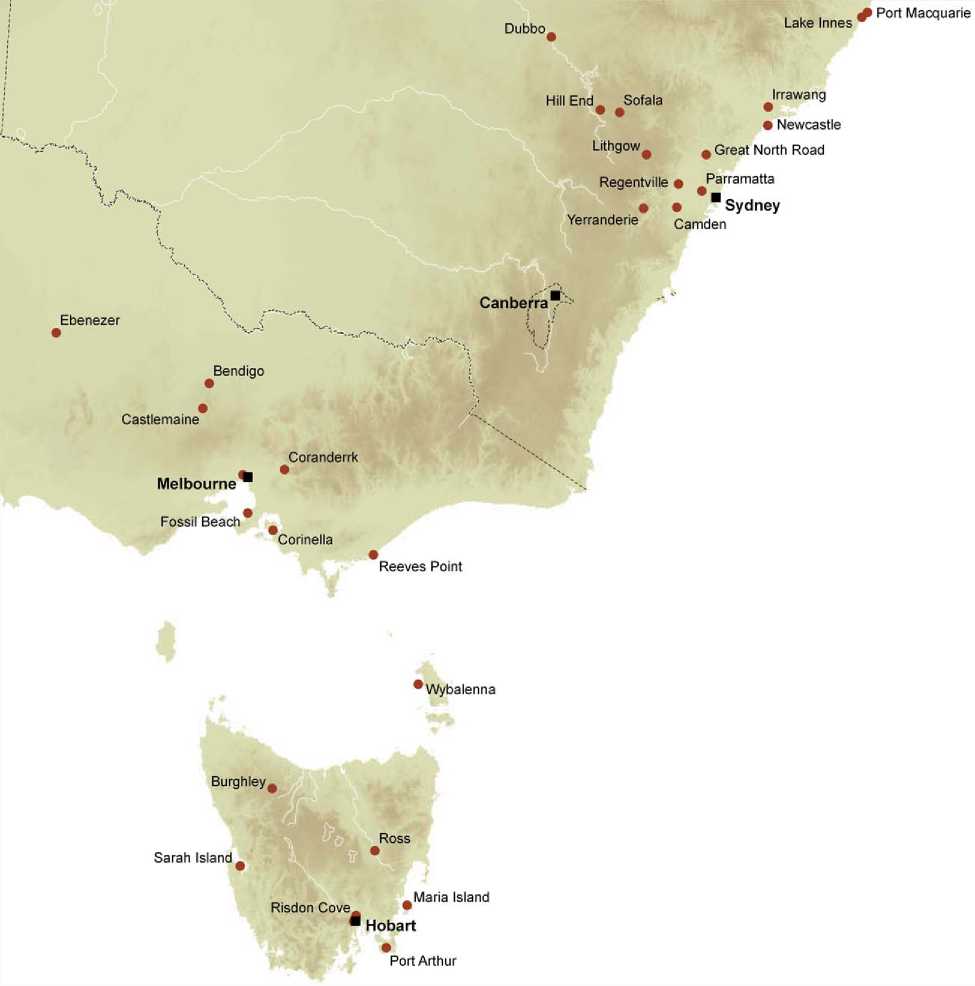Industrial activity began with white settlement partly for survival, and thus was always scouting for commercial prospects, the real business of colonization into which archaeology can offer unique insights. Research questions involve the selection, adaptation, and/or rejection of necessary technology; sources and availability of expertise; and the character, conditions, social and cultural needs of the workers involved. Many Australian industrial sites offer potential for investigating such questions.
In the 1960s much historic technology was still in use in city foundries and brickworks as well as in country towns, but redevelopment was imminent. Archaeological enthusiasts - from National Trust members to professional engineers - were tireless in recording this disappearing heritage, imported and locally-adapted industrial technology. Site plans, drawings, flowcharts, and photography were followed by histories and workers’ interviews; excavation was rare.
Early recorded sites included windmills, waterwheels, and horse-mills; saltworks, breweries, flourmills, olive and grape presses, wool-scours; lime kilns, brickworks, and potteries; and water supply, sanitation, and sewage farms in country towns or city suburbs. These studies - usually single-site - concentrated on how the site operated, identifying technology used, changes over time, sources of raw materials, nature of the plant, plans of its layout and flowchart of processing, with reference to company financial records of costs and returns. Others extended beyond the site to their transport systems, and the local communities and distant boardrooms behind them. The main questions concerned how the site worked, with emphasis on observation and recording of the processes involved and choices made.
For mining sites, the location was determined by the resource. The mining of Australia’s rich mineral resources moved across huge landscapes in all states. The mining of coal began in 1801 near Newcastle, copper in South Australia from 1844 at Burra and Kapunda, tin from 1871 at Tingha, and silver-lead-zinc from Silverton and Broken Hill from 1883. Gold has left the most numerous surface traces, from Sofala in NSW and Castlemaine in Victoria in the 1850s, Hill End and the Palmer River in the 1870s, Pine Creek from 1877, and Kalgoorlie-Coolgardie from 1893. Recording processes and plant surviving in these distant locations continues; conversely, development pressure is often less (Figure 2).
Preservation of industrial relics is a different matter. While industrial sites now come within regional planning schemes because of their heritage values, assessments by professional interest groups often conflict disastrously with commercial interests. Sometimes there are conservation solutions. The massive mining company BHP Newcastle initiated their own historical recording of the recently closed 1915 complex, while in small towns local councils may support potteries, breweries, foundries, or pipe-works for tourist visitation. Some dramatic industrial structures are retained with new uses after closure: examples include Lithgow’s blast furnace, Perth’s Swan Brewery, the Commissariat Store in Brisbane, and Sydney Park on the site of the old Austral Brickworks. Such sites often undergo a great change after their original features have been recorded, although a crucial part of a long-familiar skyline does remain. Others become museums - the Living Museum of the West, based on the former Hughes Pipeworks in Footscray, and Sydney’s Eveleigh Railway Workshops Technology Park, or the impressive Power House Museum. Others of huge historic significance - Pyrmont Railway Yards in Sydney, the hub of a century of wool export - can be reduced to rubble without trace.
Some mining remains in the bush are protected by incorporation into National Parks such as Hill End and Yerranderie. In Victoria the rich heritage of goldmining relics and sites around Bendigo and Castle-maine are conserved as part of the major Heritage Victoria Gold Mining project. South Australia also presents its varied heritage of Cornish engine houses and UK copper-mining technology as a tourist resource. These spectacular industrial monuments still signify remarkable past enterprise.
An early model applied to industrial archaeological sites concerning sources and adaptations of imported technology was the Swiss Family Robinson model, based on the adaptation of equipment from the colonizing country to new needs, as well as adaptation of practice and expertise. Australian experience has also been compared with other colonies - South Africa, Canada, and Jamaica. Archaeology also proved informative on the gap between what the Board knew in London and what was really happening on site. These included frequent disasters over imported technology - expensive boilers at Hill End or Arltunga were hauled huge distances but scarcely worked and rarely utilized processes; the Peake copper smelter that worked for just 6 days. In Western Australia, evidence of the Coolgardie rush of 1893 survives in Kalgoorlie’s still operating mines and extensive mining relics. A major heritage item is the Goldfields Water Scheme (1898-1903) with eight pumping stations, the great Mundaring Weir, and a pipeline 523 km long to carry water from the coast to

Figure 2 Historical archaeological sites in Southeastern Australia referred to in the text. Map by Andrew Wilson, Archaeological Computing Laboratory, University of Sydney.
The goldfields as well as the associated work camp sites, now the subject of archaeological study.
Research directions today include the social contexts of industrial sites. Settlements as well as mine-shafts are integrated into the industrial landscape - employees’ households, single-men quarters and mess room or pub, together with oral histories, wherever possible, backgrounding employee families. Such projects include the archaeological traces of transient Chinese miners, alluvial mining sites, techniques and trade routes that followed gold rushes across Australia from 1850.




 World History
World History









